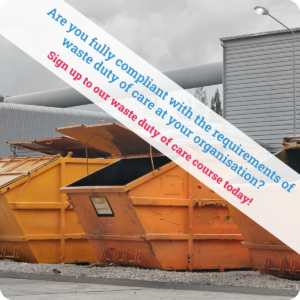Every day businesses across the UK just like yours are throwing away profits due to the waste they produce. It’s not just about final disposal costs, but all those additional costs that went into buying raw materials in the first place, processing activities, staff handling, etc. In fact, when you add in all the ‘hidden’ costs, the real cost of managing your waste could be 5 to 10 times higher than the actual cost of disposal.
Shockingly, it’s estimated that waste costs UK businesses up to 3-4% of annual turnover. Do you know how much your business really spends on waste?
What can you do to reduce the amount of waste you produce and make savings to that bottom line?
Well, there’s something called the ‘Waste Hierarchy’ that’s been developed to help you identify what waste management options there are for your waste.
The Waste Hierarchy is usually presented as a pyramid like this:

It represents an order of preference for taking action to reduce and manage waste. The most preferable option ‘prevention’ is at the top, followed by a range of other options that should be applied where possible, before reaching the least preferable option of ‘disposal’ at the bottom. The aim is to extract the maximum benefits from products and materials and generate the minimum amount of waste.
What does each stage mean?
- Prevention: Using less material in design and manufacture; keeping products for longer; re use; using less hazardous materials.
- Preparing for re-use: Checking, cleaning, repairing, refurbishing, whole items or spare parts without other pre-processing (reuse means using a substance, product or material again before it becomes waste).
- Recycling: Turning waste into a new substance or product.
- Other recovery: Includes anaerobic digestion, incineration with energy recovery, gasification and pyrolysis which produce energy (fuels, heat and power) and materials from waste.
- Disposal: Landfill and incineration without energy recovery.
If applied correctly, the benefits of using the Waste Hierarchy can include helping to:
- Prevent emissions of harmful greenhouse gas emissions.
- Save energy.
- Reduce pollutants.
- Conserve valuable resources.
- Create jobs.
- Stimulate the development of green technologies.
The Hierarchy is part of environmental law. It was introduced by the European Union (EU) via the Waste Framework Directive to emphasise the importance of waste minimisation. In the UK the requirements of this Directive and the need for businesses to use the Waste Hierarchy have been brought into force through the Waste Regulations 2011.
This means that if your business or organisation (that includes local authorities on behalf of householders) produces or handles waste (including anyone that imports, produces, carries, keeps or treats waste, brokers or dealers who have control of waste, and anyone responsible for the transfer of waste) you must take reasonable measures to prevent waste from occurring in the first place and apply the Waste Hierarchy when you transfer waste. You may have noticed that there’s now a declaration in Waste Transfer Notes and Hazardous Waste Consignment Notes that requires you to confirm that you’ve taken all reasonable steps to apply the Hierarchy.
What does this mean in practice?
Well, you need to address the following:
- You need to know what wastes you’re producing first of all, so make sure you’ve identified all of the different waste streams for your business.
- You should then plan how you’ll apply the Waste Hierarchy to each waste stream.
- The best thing to do is make efforts to produce less waste by adopting resource efficient practices.
- If you can’t do this, it’s important to sort and segregate the waste that you produce to help you, or others, recover value from it.
- Remember that other factors will influence decisions you make about waste management, e.g. options that are technically feasible, economically viable, etc. so it’s best to consider the Hierarchy on a case by case basis according to the circumstance of the business. If you make a decision on waste management, which does not comply with Hierarchy because of these other factors, you must be able to justify them.
- You should monitor your performance regularly to ensure continual improvement.
So hopefully that’s given you the lowdown on what The Waste Hierarchy is and how to apply it within your business. Good luck with reducing your waste and making those cost savings!
